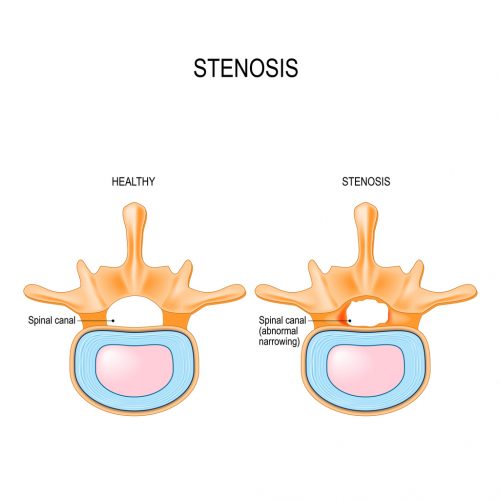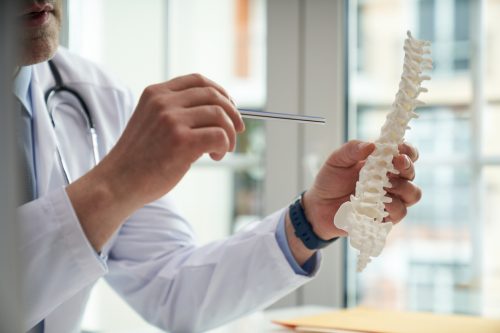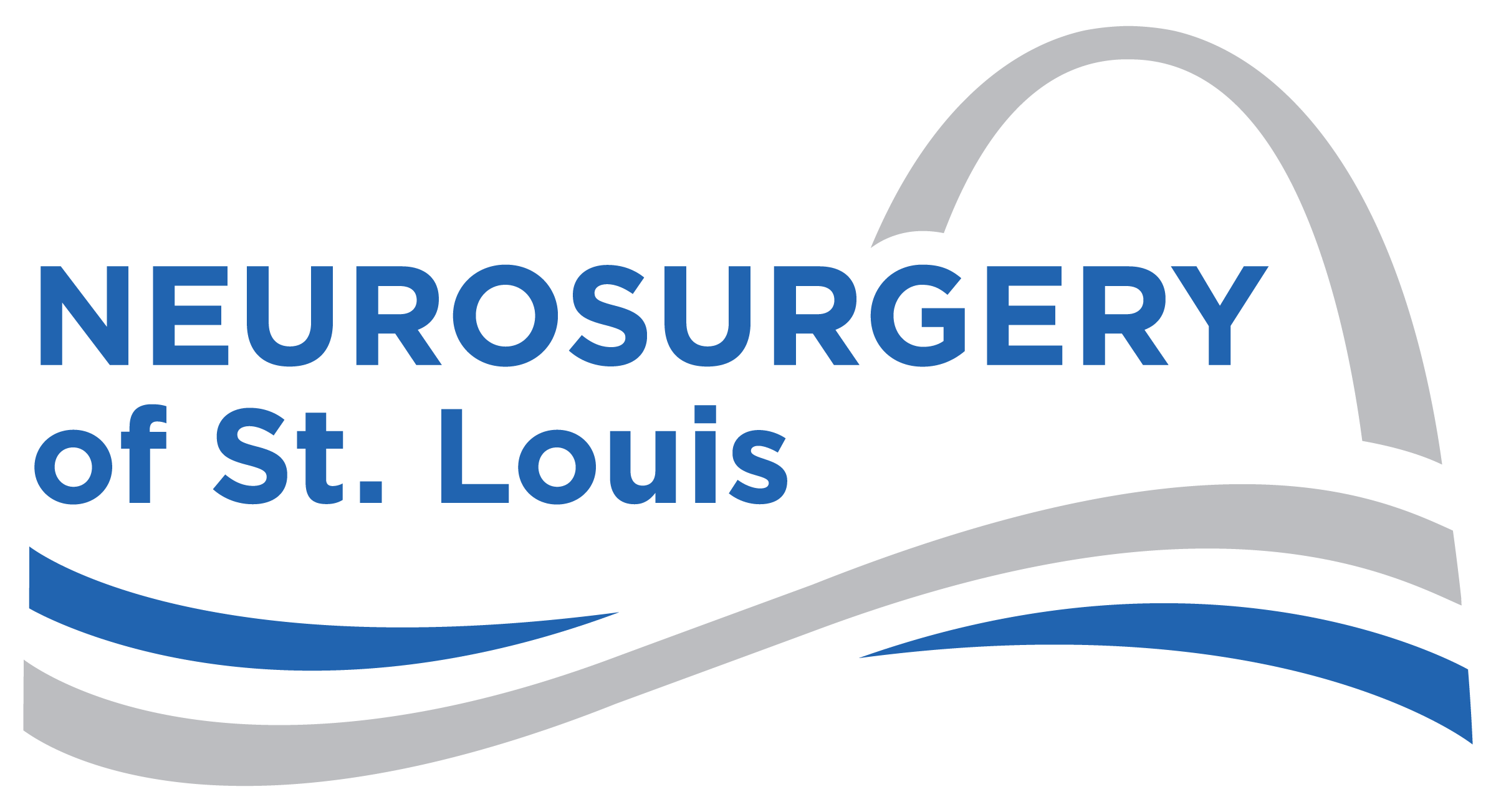RELIEF FROM SPINAL STENOSIS
Stenosis is the narrowing of the canal in your spine that houses your spinal cord and where your nerves originate, causing shooting pain in your neck, back, arms or legs. Stenosis can also cause a loss of function.

Types of Spinal Stenosis
Spinal stenosis can occur in either the neck or back. It’s the same condition, named for where it’s located.
Cervical stenosis – the narrowing is in your neck
Lumbar stenosis – the narrowing is in your back
Diagnosis
We will talk to you about the symptoms you are experiencing, because stenosis can present with symptoms other than pain. Stenosis can be in your neck or lower back. It can also be congenital or degenerative. Based on your symptoms, an MRI may be indicated to evaluate for stenosis. Sometimes surgery is recommended and can be urgent.

Diagnosis

Learn More About Spinal Stenosis
The Most Common Group of Symptoms
Spinal Stenosis – In your neck can cause Cervical Myelopathy, while spinal stenosis in your lower back can cause Neurogenic Claudication.
Cervical Myelopathy – Symptoms include numbness/tingling in your arms or hands, loss of function in your hands, balance issues, or loss of bowel and/or bladder function.
Neurogenic Claudication – Symptoms usually include numbness or heaviness in your legs when you walk or stand for too long. You can also feel like you have no strength in your legs when you walk. Most patients can only walk several hundred feet before having to stop and sit because their legs feel so weak, numb, or tired. After sitting for a short amount of time, the symptoms improve. Symptoms may also improve with leaning over a shopping cart or chair.
Risks and Symptoms
People over 50 are at the highest risk of spinal stenosis. Stenosis in your neck (cervical stenosis) can cause pain in your neck and down your arms. Stenosis in your lower back (lumbar stenosis) can cause pain down your legs or in your back, which worsens with walking or standing.
Stenosis can also cause tingling, numbness, muscle weakness, unsteady walking or feeling uncoordinated, fine motor difficulty in your hands, and loss of bladder control. Any of these symptoms require urgent evaluation.
Treatments for Stenosis
- Epidural Injections
- Physical Therapy
- Surgery
- Contact Us
Surgical intervention for cervical or lumbar stenosis is common due to the underlying structural problem. Without a decompression surgery, the stenosis or compression of the canal will still be present. This is why an injection or physical therapy may not be successful.
Once an assessment has been made and surgery is required, this usually includes a laminectomy and/or facetectomy with or without a fusion. A laminectomy and/or facetectomy allows for more space around the spinal cord or nerve roots, minimizing irritation. In some cases, a fusion is also required to stabilize the spine following a laminectomy.
Learn more:
Ready to learn more? Contact us today to get started.
Make an Appointment
New & Existing Patients: Request An Appointment
New and existing patients may request an appointment by filling out the form below. Someone from our team will be contacting you to schedule an appointment time.

